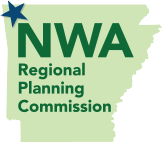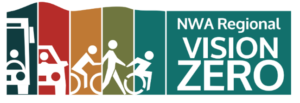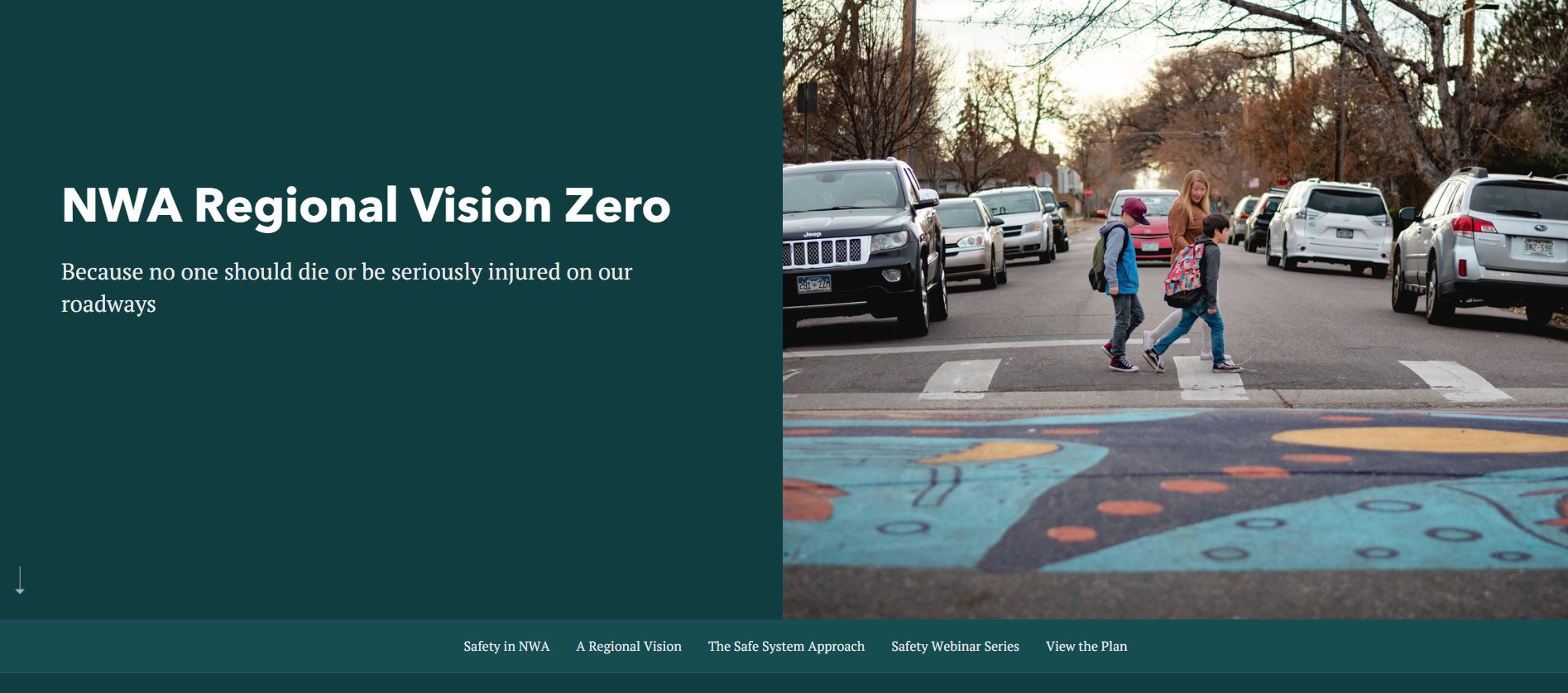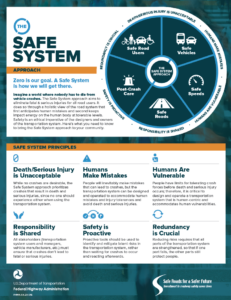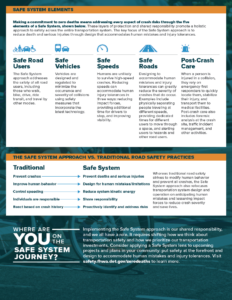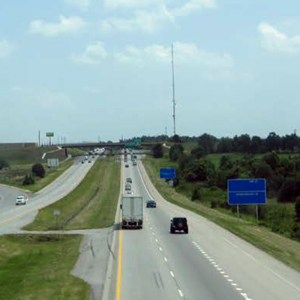Transportation
NWA Vision Zero Safety Action Plan
Loss of life or serious injury is unacceptable on our transportation network
The Safe Streets and Roads for All (SS4A) Comprehensive Safety Action Plan – or the NWA Vision Zero Plan – adopted in June 2023, is grounded in the Safe System Approach and outlines strategies and actions that can be taken in Northwest Arkansas to reduce and eliminate fatal and serious injury crashes on our transportation system. The Plan was funded through a STBG grant and through the award of a USDOT SS4A Action Plan grant.
Click the image below to visit the NWA Vision Zero Project Story Map to learn more!
Click here to visit the NWA CSAP Story Map
DELIVERABLES
NWA VISION ZERO PLAN
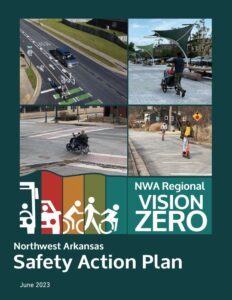 The Northwest Arkansas “Vision Zero” Comprehensive Safety Action Plan (CSAP) supports regional and local initiatives to prevent roadway deaths and serious injuries. The NWA Vision Zero Plan considers safety strategies, equity and inclusion, public engagement, behavior change, culture change, complete streets, safe system approach, policy, transparency, design standards, and implementation strategies.
The Northwest Arkansas “Vision Zero” Comprehensive Safety Action Plan (CSAP) supports regional and local initiatives to prevent roadway deaths and serious injuries. The NWA Vision Zero Plan considers safety strategies, equity and inclusion, public engagement, behavior change, culture change, complete streets, safe system approach, policy, transparency, design standards, and implementation strategies.
The Northwest Arkansas Regional Planning Commission (NWARPC) adopted the NWA “Vision Zero” Comprehensive Safety Action Plan (CSAP) on June 28, 2023. The Final Plan and Appendices can be found here:
NWA Vision Zero Plan and Appendices
NWA Vision Zero Plan
Appendix A: Crash Maps Report
Appendix B: Descriptive Crash Analysis
Appendix C: Equity Analysis Framework
Appendix D: Project Prioritization
Resolutions Adopting Vision Zero Goals
NWARPC | Bella Vista | Bentonville | Centerton | Fayetteville | Huntsville | Rogers | Springdale
NWA Regional Complete Streets Design Guide
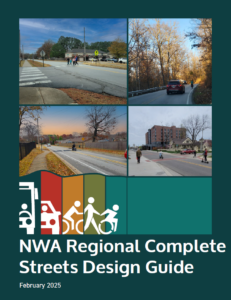 The Northwest Arkansas Regional Complete Streets Design Guide provides decision-makers, planners, and designers with a framework to create balanced streets that accommodate all modes of transportation, supporting the region’s transportation goals, encouraging collaboration, and enhancing safety and accessibility for all users. The Guide was adopted by the Northwest Arkansas Regional Planning Commission (NWARPC) on February 26, 2025. The final Guide can be found here:
The Northwest Arkansas Regional Complete Streets Design Guide provides decision-makers, planners, and designers with a framework to create balanced streets that accommodate all modes of transportation, supporting the region’s transportation goals, encouraging collaboration, and enhancing safety and accessibility for all users. The Guide was adopted by the Northwest Arkansas Regional Planning Commission (NWARPC) on February 26, 2025. The final Guide can be found here:
NWA Regional Complete Streets Design Guide
FHWA’s Safe System Approach and Proven Safety Countermeasures
The NWARPC Vision Zero Plan follows the FHWA Safe System Approach Guidelines.
The zero deaths vision acknowledges that even one death on our transportation system is unacceptable and focuses on safe mobility for all road users. Reaching zero deaths requires the implementation of a Safe System approach, which was founded on the principles that humans make mistakes and that human bodies have limited ability to tolerate crash impacts. In a Safe System, those mistakes should never lead to death. Applying the Safe System approach involves anticipating human mistakes by designing and managing road infrastructure to keep the risk of a mistake low; and when a mistake leads to a crash, the impact on the human body doesn’t result in a fatality or serious injury. Road design and management should encourage safe speeds and manipulate appropriate crash angles to reduce injury severity.
FHWA’s Proven Safety Countermeasures initiative (PSCi) is a collection of 28 countermeasures and strategies effective in reducing roadway fatalities and serious injuries on our Nation’s highways. Transportation agencies are strongly encouraged to consider widespread implementation of PSCs to accelerate the achievement of local, State, and National safety goals. These strategies are designed for all road users and all kinds of roads—from rural to urban, from high-volume freeways to less traveled two-lane State and county roads, from signalized crossings to horizontal curves, and everything in between. Each countermeasure addresses at least one safety focus area – speed management, intersections, roadway departures, or pedestrians/bicyclists – while others are crosscutting strategies that address multiple safety focus areas.
Links & Resources: The US Department of Transportation has many resources available intended to help interested stakeholders prepare for Vision Zero Planning and Implementation. These resources can be found here.
